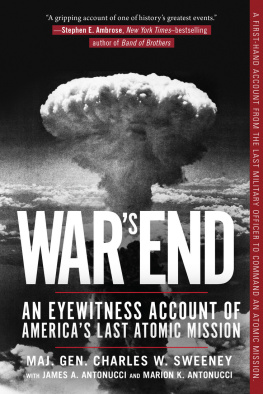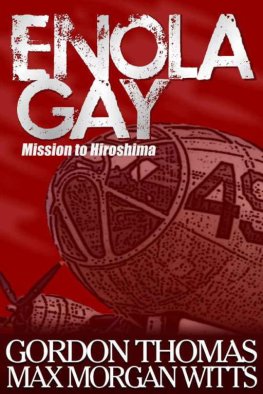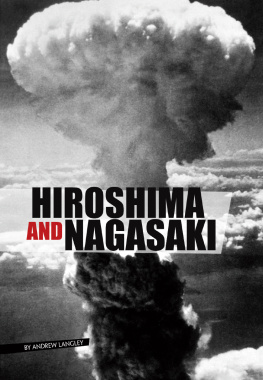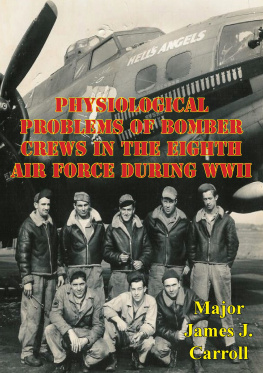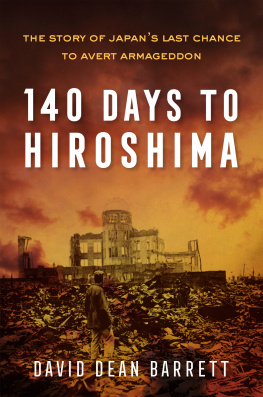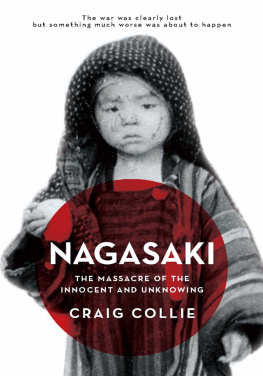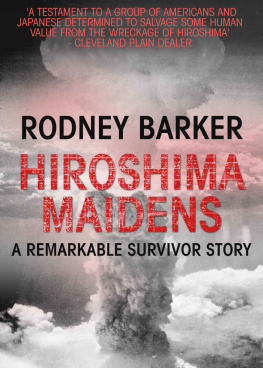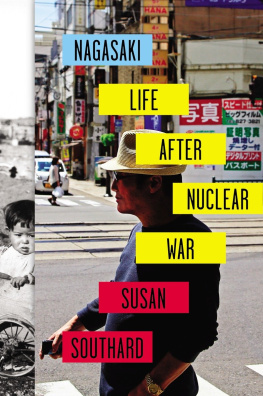


Copyright 2018 by Maj. Gen. Charles W. Sweeney, James A. Antonucci, and Marion K. Antonucci
Originally published by Avon books in 1997.
The photographs on pages 1 through 7 of the insert are courtesy of Maj. Gen. Charles W. Sweeney. The photograph of General Sweeney on page 8 of the insert is by James A. Antonucci.
All rights reserved. No part of this book may be reproduced in any manner without the express written consent of the publisher, except in the case of brief excerpts in critical reviews or articles. All inquiries should be addressed to Skyhorse Publishing, 307 West 36th Street, 11th Floor, New York, NY 10018.
Skyhorse Publishing books may be purchased in bulk at special discounts for sales promotion, corporate gifts, fund-raising, or educational purposes. Special editions can also be created to specifications. For details, contact the Special Sales Department, Skyhorse Publishing, 307 West 36th Street, 11th Floor, New York, NY 10018 or .
Skyhorse and Skyhorse Publishing are registered trademarks of Skyhorse Publishing, Inc., a Delaware corporation.
Visit our website at www.skyhorsepublishing.com.
10 9 8 7 6 5 4 3 2 1
Library of Congress Cataloging-in-Publication Data is available on file.
Cover design by Rain Saukas
ISBN: 978-1-5107-2472-3
Ebook ISBN: 978-1-5107-2473-0
Printed in the United States of America

I dedicate this book to my children and grandchildren and to future generations of Americans who seek an understanding of their history.

Contents

ACKNOWLEDGMENTS
1997
As the fiftieth anniversary of the end of World War II approached in 1995, hundreds of people of all ages sent me letters of well-wishes and newspaper articles about the war in the Pacific. Veterans often shared firsthand accounts of their experiences. Many of the veterans who wrote to me had been POWs in Japanese camps. I wish to thank all of the people who shared with me their interest in the facts about the war in the Pacific.
I also want to thank the late Kermit Beahanwhose notes about the mission I consultedFred Bock, and Jim Van Pelt. Jim passed away in 1995. When I needed to confirm a place or a date or an event, I could count on Fred and Jim to have what I needed. Some things never change, even after fifty years.
As I sat at breakfast on the last day of the 1995 reunion of the 509th Composite Group in Albuquerque, New Mexico, Don Mastick came over to my table and shared with me a remarkable incident he had witnessed shortly before my takeoff to Kokura when the Project Alberta technicians were assembling Fat Man. Later he graciously provided more detail, which I included in the books opening chapter. I thank Don for sharing this experience with me.
Finally, I offer a special tribute to General Paul Tibbets, one of our militarys great leaders and the finest pilot I have ever met. I was honored that he chose me to participate in this extraordinary undertaking.
Major General Charles W. Sweeney (Ret.)
August, 1997, Milton, MA
2018
I want to thank my editors at Skyhorse Publishing, Inc., Michael Campbell and his predecessor, Joe Craig, for recognizing the continuing relevance and importance of General Sweenys amazing story and their commitment to present this book to a new generation of readers seeking the truth about the Hiroshima and Nagasaki missions. I also wish to thank my literary agent, Al Zuckerman of The Writers House in New York City, for his sound advice and clarity of thought in bring this book back into the public square of ideas.
To my daughter, Susan Magnet; my grandchildren Jessica and Nicole; and son-in-law Kirk, thank you for being there, for giving me the unconditional love, comfort, and security of family.
I want to thank my late friend, General Sweeney, for his faith in Marion and me to tell his story. As we traveled the country together to air shows, book signings, TV and radio appearances, I came to know not just a general and historic figure, but a warm, witty, and gracious man who embraced life with boundless energy and good humor.
And finally, I want to thank my best friend and collaborator, my late wife, Marion Keats Antonucci, for her unwavering optimism and always precise observations and suggestions as we wrote this remarkable story. Having Marion as my writing partner was a pure joya rich and invaluable gift.
I regret that Marion and the General are not here to share in the re-publication of this book. The world is a less interesting and joyful place without them.
James A. Antonucci
August, 2018, Marblehead, MA

FOREWORD
When I was a kid in grammar school, I remember for the Armistice Day assembly they would drag in some poor old guys from the Spanish-American War to tell us about what they had experienced. Now Im the old guy doing the telling.
The war is World War II. At twenty-five years of age, I was the only pilot who flew on both atomic missionsover Hiroshima and Nagasaki. I piloted the B-29 carrying the instruments to Hiroshima on the right wing of the Enola Gay. I watched as the Enola Gays bomb bay doors snapped opened and the 9,000-pound uranium bomb was released. As the bomb fell free, I thought, Its too late now. There are no strings or cables attached. We cant get it back, whether it works or not. But if it works, it just might end the war. None of us, I remember, was entirely sure of what that bomb would doto its target or to us.
Three days later, I commanded my first combat mission, to Nagasaki, this time carrying a live 10,300-pound plutonium bomb, a weapon that had never been tested free falling from an airplane before it was loaded into the bomb bay of the Bocks Car on the evening of August 8, 1945. The Japanese military surrendered six days later, and World War II came to an end.
It was as simple and as complicated as that.
We had a job to do, a war to end. I never questioned President Trumans decision to use every weapon at his disposal to end the bloody conflictnor do I now. Nor did most people then, who lived through the escalating terror of that now-distant war in the Pacific. I remember press interviews after the war where reporters asked me, What were the missions like? What problems did you run into during flight? How does it feel for the war to be over? I was never asked whether I believed the bomb should have been dropped.
But that was over fifty years ago. For those fifty years I remained mostly silent about the war and President Trumans decision to use atomic weapons. In part this was because of my deep respect for and deference to General Paul Tibbets. I believed that as the leader of the 509th Composite Group, he should be spokesman for our crews and our missions. Nor did I want to take singular credit for events that were successful because of the efforts of thousands of people. Also, as I reflect upon the relative obscurity of the
Next page
